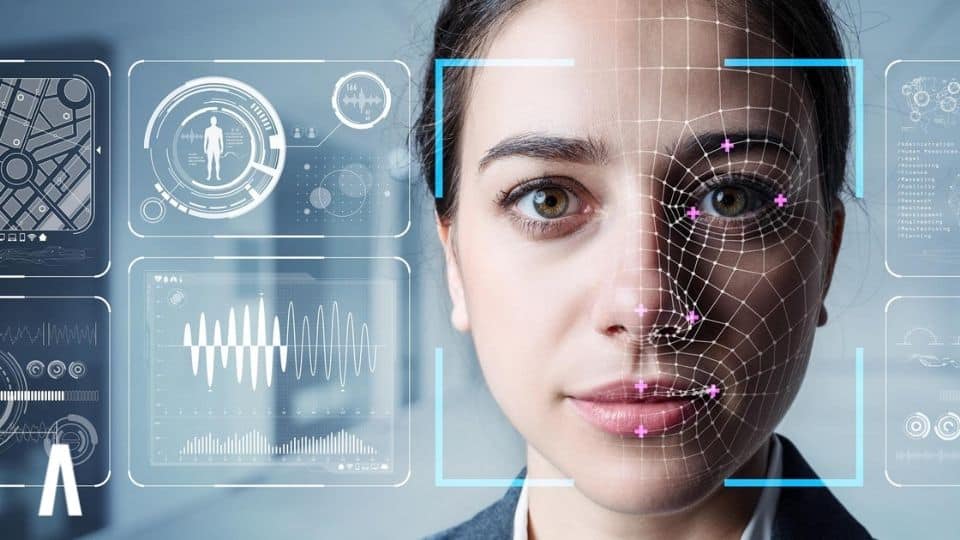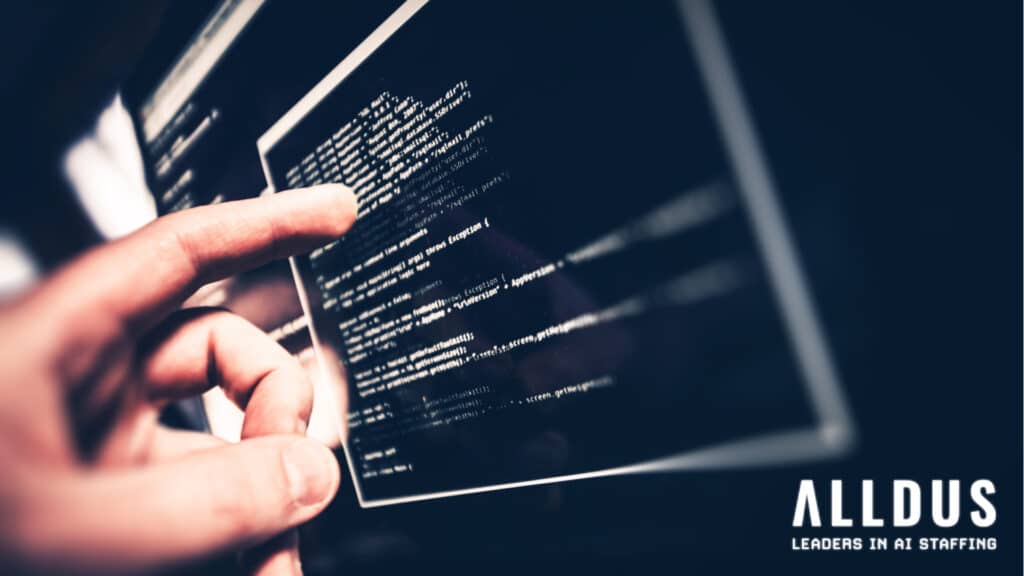Electronic Health Records (EHRs): How AI is improving clinician use
Blog | April 22 2021 | Alldus Recruitment
The widespread adoption of Electronic Health Records (EHRs) has resulted in the accumulation of more medical information than ever before, with the average patient generating around 80 megabytes of clinical data per year.
One of the central justifications behind the implementation of EHRs was their perceived ability to more effectively collect and analyze this data, extracting meaningful insights and informing the decision-making process.
Despite the best intentions, and extensive Government investment, the process of EHR adoption has been challenging at best, with many studies citing them as a leading cause of physician burnout and early retirement.
Advancements in AI research, particularly in machine learning and NLP, are showing great promise in addressing some of the critical bottlenecks associated with EHRs, reducing the administrative burden placed on clinicians.
History of Electronic Health Record’s
Before exploring the ways AI is being leveraged to more effectively gather insights from patient data and reduce the administrative burden on clinicians, it is important to firstly give a brief overview of EHRs, and the principles behind their adoption.
The first clinical information system was developed by Lockheed in the mid-1960’s, with all medical records kept on paper and stored in manual filing systems up to that point. Despite their purported benefits adoption rates were low, with one study finding that only 9% of US hospitals had completed a basic EHR adoption by 2008. All that changed with the advent of the HITECH act in 2009, which provided financial incentives to encourage clinics and hospitals to transition from the old paper charts to electronic records.
The benefits of widespread adoption were clear and intuitive. Rather than having to manually search specially made shelves for hand-written visit notes, clinicians could now access patient information electronically from a centralized system, saving time and allowing for effective data analysis.
Despite the estimated $36 billion in Government payments to subsidize EHR adoption, they haven’t been universally well-received.
Many of the most popular EHRs are built around legacy systems, making them cumbersome and difficult to navigate. A recent study from Stanford found that 71% of respondents viewed EHRs as greatly contributing to physician burnout, with 59% agreeing a complete overhaul is required. Common complaints ranged from systems requiring too many clicks, frequent crashes and complexity of use.
As well as negatively impacting patient care, physician burnout is estimated to cost the healthcare industry up to $6.3 billion annually.
Here are just some of the ways AI is being applied to Electronic Health Records to reduce this burden.

AI-Powered Voice Assistants
Perhaps the most damning statistic associated with EHR adoption is the average of 6 hours a day Doctors are spending on data entry, taking valuable time away from patient interaction, and contributing to a burnout rate that is nearly double that of the general population.
Advancements in the field of Natural Language Processing (NLP), have led to a proliferation of AI medical transcription solutions that aim to solve this problem.
One such example is Suki, an AI-powered voice assistant that aims to reduce the administrative burden placed on medical professionals. Described as “Alexa for Doctors”, clinicians can use Suki to take voice notes during patient examinations, which are then parsed and uploaded directly to the EHR in real-time. The system can also be queried in a manner similar to Alexa, enabling Doctors to retrieve patient information using simple voice commands, allowing for critical insights at the point of care.
According to Suki, the digital assistant has reduced the average time it takes a physician to make a note by 76% across their user base, going from over 13 minutes to just above 3.
Another company hoping to remove the need for laborious medical data entry is Robin Healthcare, who have developed a device that can be placed in the examining room, allowing Doctors to forget about the documentation process altogether.
Rather than speaking directly to the device to make voice-notes, Robin captures all the audio in a room and leverages NLP to filter out small talk and parse only the relevant medical terminology, allowing the doctor to maintain a natural conversation with the patient.
The successes brought on by the lies of Robin and Suki are not isolated either. Deployment of Nuance’s Dragon Medical One speech recognition solution resulted in a 65% reduction in time spent of triage notes at Concord Hospital in Kansas City during a trial.
Such a drastic reduction in time spent of clinical documentation will doubtless alleviate much of the pressure placed on medical professionals through manual data entry, freeing up time to put their expertise to better use.
Clinical Decision Support & Predictive Analytics
A central tenet behind the adoption of electronic health records was their ability to assist clinical decision-making and diagnoses by leveraging big data tools to extract critical insights. While great strides have been made in this area, there is still work to be done to get the most out of the potential treasure trove of patient information, with only 8% of clinicians viewing the primary value of EHRs as clinically related (the majority of respondents in a recent study viewed EHRs as predominantly data storage tools).
Advancements in machine learning have led to renewed interest in Computerized Clinical Decision Support Systems (CDSS) and predictive analytics models, used to augment clinician knowledge in the complex decision-making processes.
A recent example of this came through the application of Google’s DeepMind to electronic patient records to identify patients at high-risk of Acute Kidney Injury (AKI), a condition with an in-hospital mortality rate of up to 45%. AKI is notoriously difficult to spot and early detection is crucial, with research showing that up to 30% of cases could be prevented with early intervention.
Working with the US Department of Veteran Affairs (VA), DeepMind applied their artificial intelligence to a comprehensive EHR dataset to set about solving this problem. The AI was able to predict AKI up to 48 hours earlier than current diagnostic methods with 90% accuracy, giving doctors a much-needed window to provide life-saving dialysis treatment.
Similar success was seen in a 2016 study that applied NLP techniques to medical records in order to identify patients at risk of Kawasaki disease, a form of vasculitis where effective treatment hinges on early detection. The NLP-based algorithm was able to identify at-risk patients with a sensitivity of 93.6% compared to traditional, more time-consuming methods.
As well as leveraging EHR data to predict patients at high-risk of disease, intelligent CDSS tools are increasingly being utilized to analyze physician notes in real-time, proving evidence-based treatment recommendations at the point of care.
Poor integration with EHRs and generic rules-based treatment recommendations had led to a perception from many practitioners that CCDS tools were invasive and interfered with the natural flow of patient care. AI-powered tools like Google Health and Micromedex aim to change this perception.
Integrating seamlessly with a hospitals EHR, Micromedex provides customized treatment pathways based on the information contained in a patients record, identifying potential diagnoses, drug therapies and risk factors, informing the Doctors decision-making process.
Describing the benefits the system has brought to TidalHealth Peninsula Regional, Supervisor of in-patient pharmacy Rachel Cordrey stated;
“Using this tool, clinicians can just use natural language to ask what they want to ask and get rapid turnaround on any drug information questions from a trusted database of evidence-based information. By working with an AI platform and then integrating this tool into our EHR, we’ve seen great benefit for patient care”.
AI-assisted tools like Micromedex and Google Health aim not to replace clinicians, but to augment their knowledge, allowing for evidence-based treatment recommendations.
Clinical Trial Matching
The integration of AI and Electronic Health Records is also having a broader impact on the process of drug discovery, rather than simply being used to provide insights at the point of care.
The median cost of a clinical trial in the US is estimated to be around $48 million, with the selection and recruitment of appropriate candidates a critical bottleneck in the process. We previously discussed the development of a new cancer treatment where the recruitment process alone took 5 years, delaying the provision of potentially life-saving treatments.
Clinical trials are complex, and often require the participation of candidates who meet a very specific set of criteria, including age cohort, disease type and length of illness. Traditionally clinical research coordinators will manually comb through electronic health records to identify relevant candidates before approaching them about participating in a trial, a laborious and admin-heavy task.
The application of AI tools to patient records is revolutionizing this process, drastically cutting the time it takes to recruit trial participants.
Companies like IQVIA and Deep6 are employing advanced analytics techniques to sift through the vast amounts of fragmented data contained in an EHR. Use of NLP text-mining can identify relevant patient cohorts automatically, matching the information contained in a patients record to the description of a clinical trial.
A process that traditionally takes months can now be done in minutes, drastically accelerating the rate at which experimental treatments can be tested and approved.
The process of widespread Electronic Health Record adoption has been a long and complex one. 50 years on from the development of the first clinical information systems, work remains to be done to reduce the burden placed on physicians and to remove the perception that EHRs are simply a time-consuming tool for data storage.
Rather than replacing the need for doctor-patient interaction, tools like Suki, Micromedex and Deep6 are at their best when augmenting care-provision, providing critical insights and recommendations at the point of care and removing the need for time-consuming data-entry.
Alldus Director Mike Froggatt offered his insights into how the integration of AI and EHRs is changing the face of the healthcare provision;
“We’ve seen a real and lasting shift in how we interact with our personal health data. During the pandemic there has been an obvious rise in the need for telehealth and communicating with your healthcare providers remotely, this means that not only do different healthcare providers need to have access to your EHR’s, but they need to be able to access that information from separate and decentralized locations. This is where we are seeing the biggest hiring trends when it comes to EHR AI solutions. Knowledge of EHR’s as a domain specialty is what the market is crying out for and the first requirement in most of the searches we conduct.”
If you’re interested in a career focusing on AI in Healthcare check out our latest US Artificial Intelligence jobs or upload your resume today to stay up-to-date with the latest jobs in your area.
share
related articles
Women in AI: Bridging the Gap
Despite huge advancements in AI research, the field still lags in another key area of societal progress, gender equality. With women accounting for just 22% of professionals in the field, we examine the steps needed to address this inequality and how it would also benefit the technologies themselves
Why SQL is the base knowledge for data science
As a programming language, It's a simple skill to learn, but a very valuable one. A walk in the park compared to Python or R.
Why NLP is the future of E-Commerce
There are great benefits to using NLP in eCommerce. The world of business would be greatly benefited from in-depth insights that are controlled by AI. It will help in increasing customer satisfaction rates, improve the revenue curve & ultimately transform the future of business operations.




